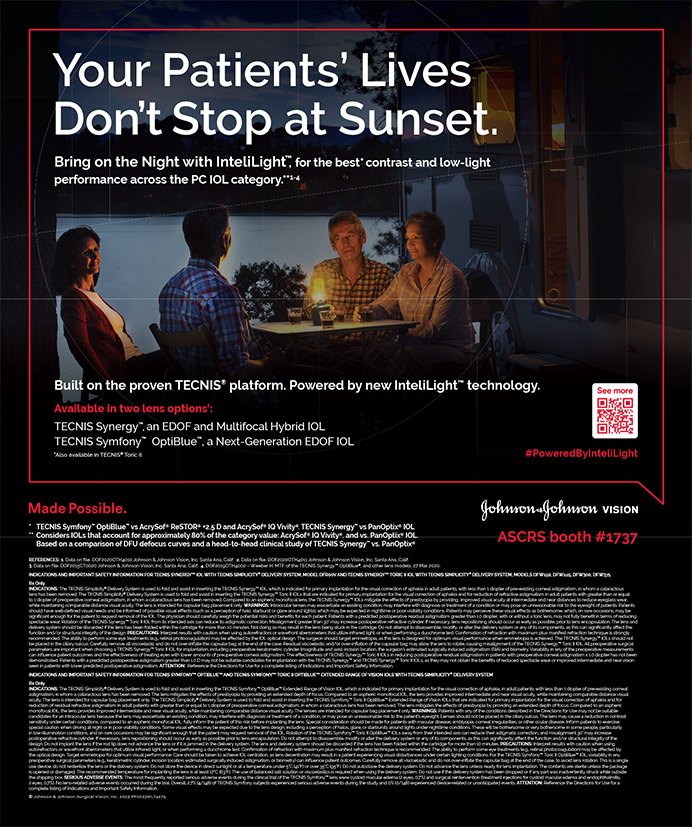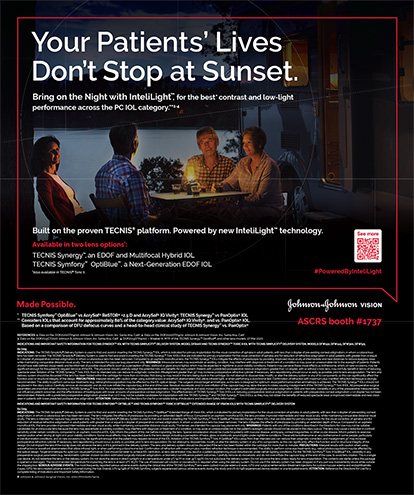Although dry eye in men is not as prevalent as the disease is in women, it does occur. Some of my most symptomatic dry eye patients are men, who account for 30% to 40% of my dry eye patients.
Dry eye's time of onset in men is not as well defined as it is in women, for whom the disease tends to begin abruptly upon menopause. In the male population, the decline in tear production may be more gradual. Although the most severe type of dry eye, Sjögren's syndrome, occurs almost exclusively in women, men are sometimes affected.
AGE AND HORMONESAs people age, the incidence of dry eye increases. The disease is common in older women who are on hormone-replacement therapy. Similarly, some older men get dry eye when they are put on antihormonal or antiandrogen therapy for prostate cancer. Typically, patients cannot halt these therapies, but, on occasion, I have talked to the patient's urologist about manipulating the therapy in severe cases of dry eye.
A natural decline in the androgen levels occurs as men age and can also contribute to dry eye in this population.
ENVIRONMENTAL FACTORSIn my opinion, environment is the biggest factor leading to dry eye in the male population. More men than women tend to work outside as construction workers, dock workers, or fishermen. Such jobs expose them to the wind and sun, which can cause dry eye. Additionally, if a person already has dry eye and is frequently exposed to the sun and wind, the condition can lead to further damage, such as pinguecula or pterygium. I recommend that outdoor workers wear moisture-chamber glasses or wrap-around glasses that absorb UV light.
TREATMENT ALGORITHMI treat dry eye in men and women basically the same. If a patient has mild dry eye (symptoms of minimal irritation), I recommend that he use an artificial tear first. If the patient is still symptomatic or has mild signs of dry eye, like corneal fluorescein staining or conjunctival indocyanine green staining, then I usually institute an anti-inflammatory treatment such as Restasis (Allergan, Inc., Irvine, CA) in addition to the artificial tears. In more severe cases, a topical steroid can be used in conjunction with Restasis for several weeks, and then the latter is continued alone. If the patient still has symptoms after using the anti-inflammatory therapy, I then consider punctal plugs. For severe dry eye, I think surgeons need to consider autologolous serum and the use of moisture-chamber glasses. If a patient has meibomian gland disease, I usually recommend that he increase his oral intake of omega-3 fatty acids such as flax seed or fish oil.
IN CLOSINGUsually, the most severe type of this disease is associated with autoimmune diseases such as Sjögren's syndrome, rheumatoid arthritis, or lupus, all of which occur primarily in women. Overall, therefore, dry eye in men tends to be less severe than in women. Environmental factors play a greater role in dry eye in men, but the treatment plan is similar in both sexes.
Stephen C. Pflugfelder, MD, is Professor of Ophthalmology and Director of the Ocular Surface Center for the Cullen Eye Institute at Baylor College of Medicine in Houston. He receives research support from Allergan, Inc., and participates on their Speaker's Bureau for Restasis.Dr. Pflugfelder may be reached at (713) 798-4732; stevenp@bcm.tmc.edu.
For a downloadable pdf of this article, including Tables and Figures, click here.


